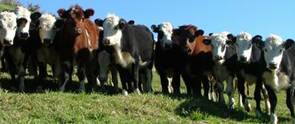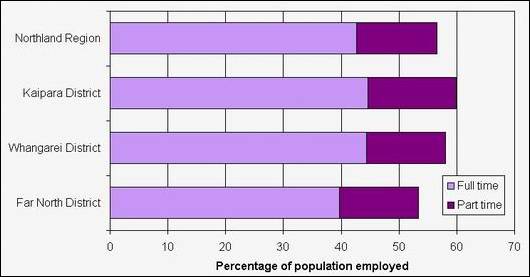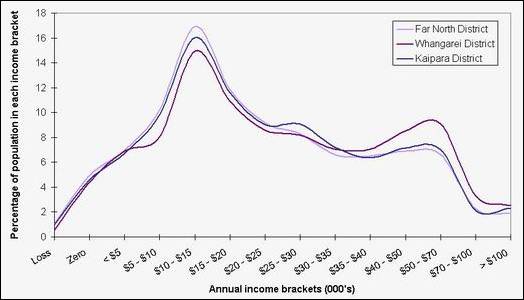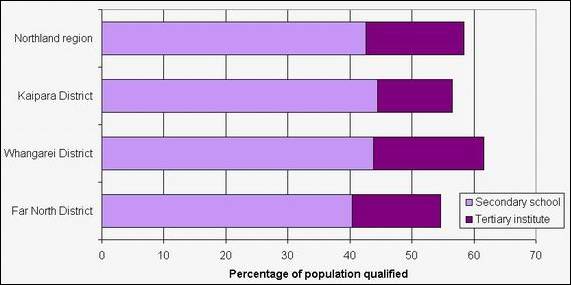2.3 Our economy
 Northland's economy is largely agricultural with well over half of the region's land devoted to dairy, beef and sheep farming. Northland produces 26% of New Zealand's meat exports and 10% of milk production (NRC 2006). Exotic forestry is also significant at about 10% of the region's land. The region also has a well developed horticultural industry, centred mainly around the growing of avocados, citrus, kiwifruit, kumara, squash and flowers.
Northland's economy is largely agricultural with well over half of the region's land devoted to dairy, beef and sheep farming. Northland produces 26% of New Zealand's meat exports and 10% of milk production (NRC 2006). Exotic forestry is also significant at about 10% of the region's land. The region also has a well developed horticultural industry, centred mainly around the growing of avocados, citrus, kiwifruit, kumara, squash and flowers.
Northland is a popular holiday destination, making tourism a significant industry. Other significant contributors to the Northland economy are the mining, marine farming and manufacturing industries. New Zealand's only oil refinery is located at Marsden Point in the Whangarei Harbour, which is also home to New Zealand's newest deepwater port.
Northland's gross regional product of $3.4 billion annually is about 3% of the national total (NRC 2006). As Northland's economy grows it also places pressure on our regional infrastructure and natural resources.
Work and income
Approximately 55,000 employees work for almost 17,000 businesses throughout Northland (NRC 2006). At least 93% of Northlanders in the labour force (people either in work or available for work) were in full or part-time employment in 2006, compared to 90% nationally (Statistics NZ 2006). However, only about 56% of Northland's resident population aged 15 years or over are in full time or part-time employment, as shown in figure 5 (below).

Figure 5: Percentage of Northland's population in full time or part-time employment for residents aged 15 years or over (Statistics NZ 2006).
In 2006 the median personal annual income level for Northlanders (aged 15 years or over) is $20,900 compared with a national average of $24,400 (Statistics NZ 2006) and the 2001 median for Northland of $18,500. Less than 15% of Northland's population (aged 15 years or over) earns over $50,000 a year, as shown in figure 6 (below). About 50% of Northland's population (aged 15 years or over) have a personal income of less than $20,000 a year.

Figure 6: Percentage of Northland's population in each income bracket for those aged 15 years and over (Statistics NZ 2006).
Education
Northland has a relatively high percentage of the population aged 15 years or over who have no formal qualification (27%), which is one of the factors that can hamper the economic growth of our region. Almost 60% of Northlanders have at least a secondary school qualification as shown in figure 7 (below).

Figure 7: Percentage of Northland's population with their highest education being secondary school or tertiary education, for residents aged 15 years and over (Statistics NZ 2006).
